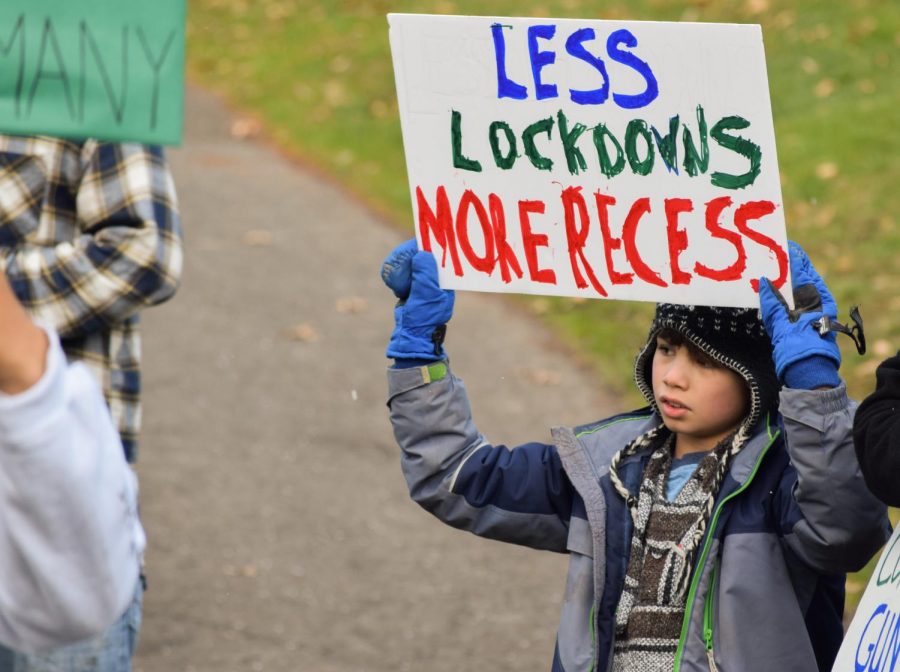Kids should know what they’re protesting
Parents should talk to their kids before protesting to make sure they understand the whole story
MICHAEL LINDER | DAILY EVERGREEN FILE
A child holds a sign in support of better gun control at March for Our Lives in Moscow. While children taking part in democracy should be supported, we should make sure they know the facts before they take to the streets.
April 3, 2018
There is such a strength in having a voice.
We often underestimate the importance of our voices and how we use them. More and more, people are finding reasons to use their voices to support causes close to their hearts. However, we need to be careful how we lend them to others.
Students all over the country participated in March for Our Lives and walkouts these past few weeks, including Pullman High students, giving their voices to a cause they’re passionate about.
At least, this is the hope.
In reality, with such a large turnout, one has to ask if there is any way all of those students could possibly have known exactly what they were walking out for. Most did know the phrase gun control, but with the phrase comes a lot of other questions and details maybe not discussed with the students who were walking out.
Chris Barry, a psychology professor whose research focuses on adolescent behavior, believes there is a discussion to be had between the parents and the students, particularly younger ones.
“The younger the kid, the more work the parents have to do to define some of these terms like gun control,” Barry said. “We kind of take for granted that we have a common definition of that, that people just sort of understand what that means.”
Gun control constantly proves to be a complicated topic, to the point where many adults — let alone children — don’t agree on exactly what it means. Some people claim gun control should be restricting certain types of weapons, others believe there should be stricter background checks and there are even those who think there should be a ban.
On their website, March For Our Lives has a mission statement that claims there are five things they want in relation to gun control: universal background checks, the Bureau of Alcohol, Tobacco, Firearms and Explosives to create a searchable database, funding for the Center for Disease Control to research gun violence in America, a high-capacity magazine ban, and an assault weapons ban.
These are complex requests, each with a different discussion surrounding them.
It is unlikely that children under the age of 12 know what ATF is or what CDC has to do with gun violence are extremely slim. In fact, we have to ask ourselves if even all of the high schoolers participating in the walkouts knew the five points of the March for Our Lives movement’s mission statement existed or what each of them meant.
In lots of ways, it’s good students are being politically active and want change. Involvement isn’t a bad thing, but when the involvement is uninformed, deeper issues can arise. There needs to be a conversation happening somewhere.
Barry believes the school should be a neutral voice in all of this.
“What I would hope the messaging from the school is that, no matter which side of the issue, this is about freedom of speech,” Barry said. “In terms of the educational side of this, it’s really about freedom of speech and speaking out, not speaking out in a certain direction.”
Freedom of speech is important and so is exercising it. Students being able to speak out for what they believe is important. They should be able to lend their voices to whatever they please, but they should also know what they’re supporting.
Older students should take the time to do some research before protesting to make sure they agree, and parents of younger students should take the time to have these conversations with their children.
After all, there is a strength in having a voice.










